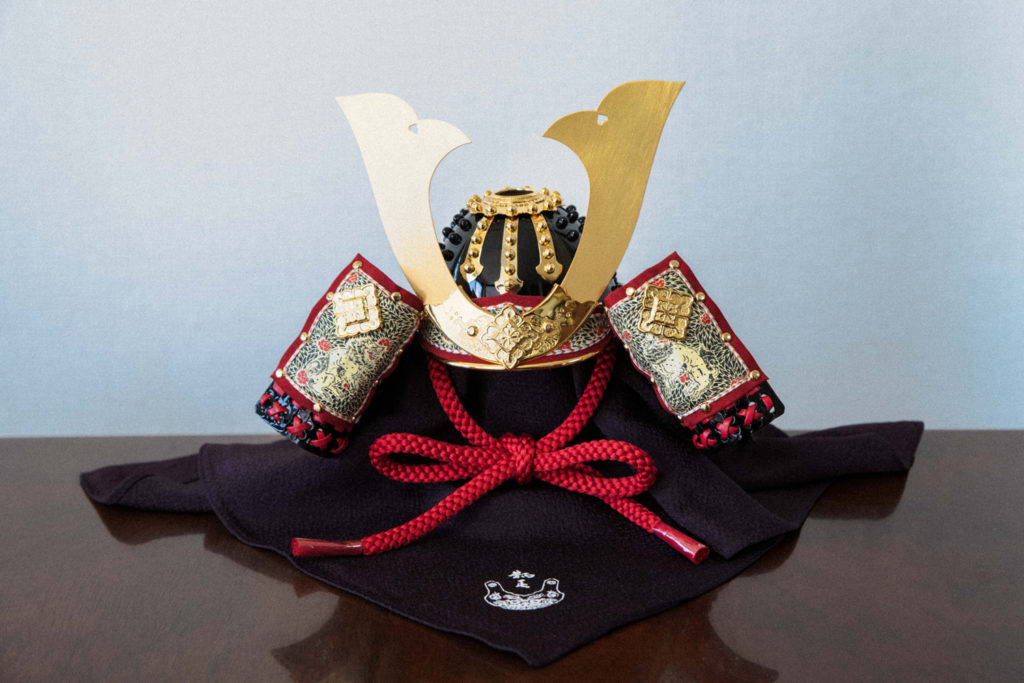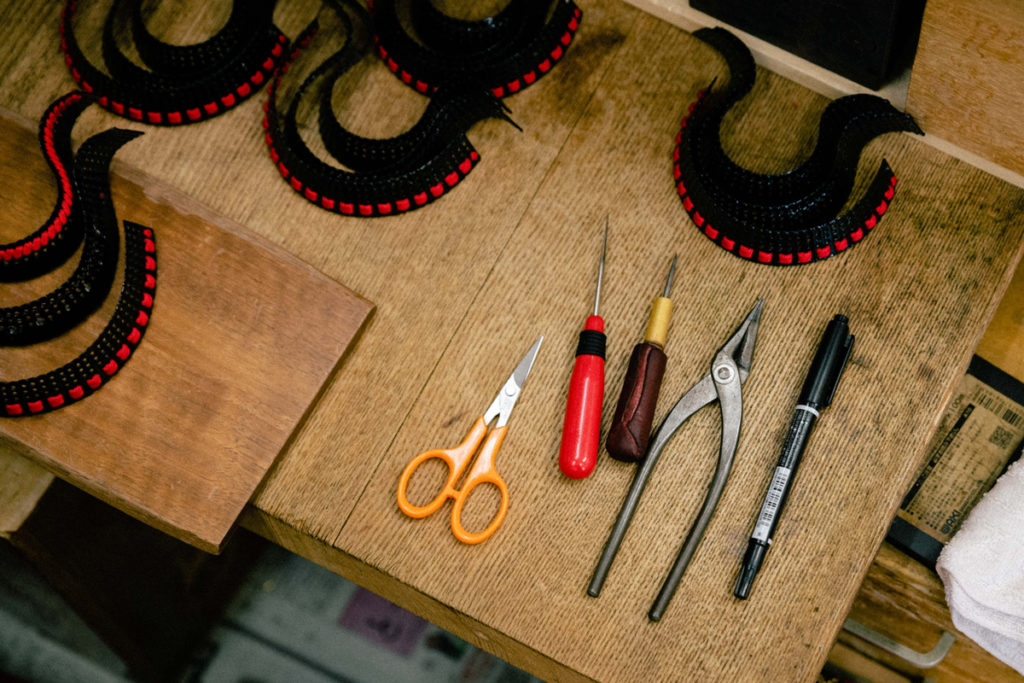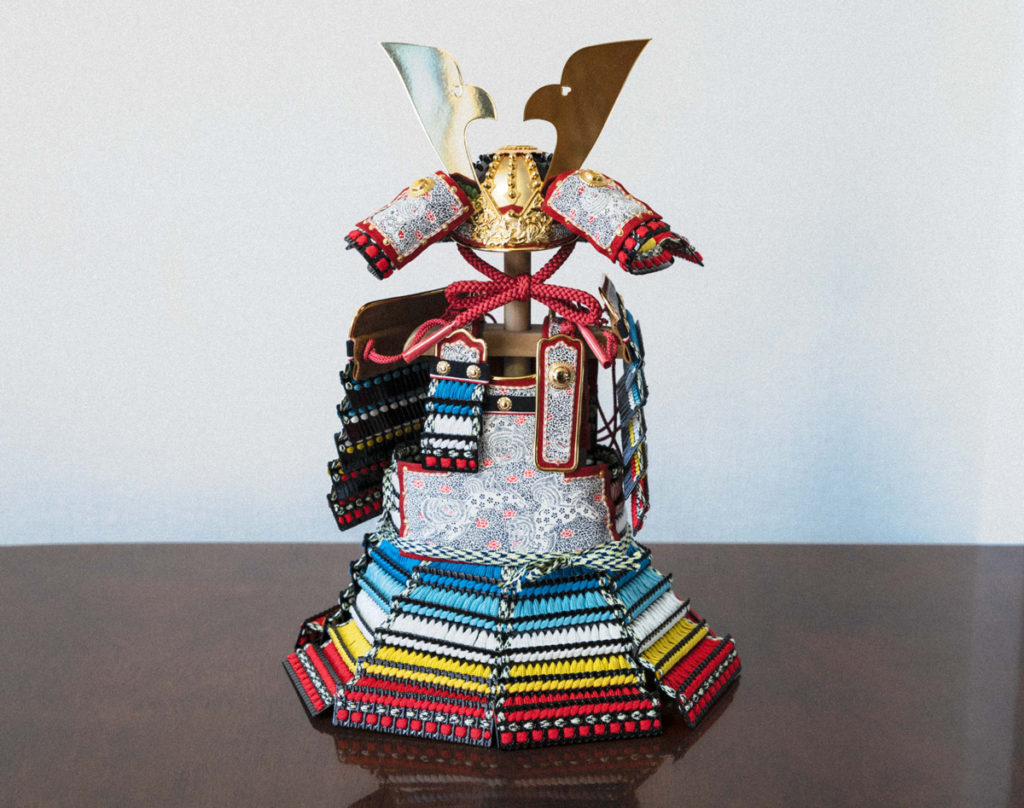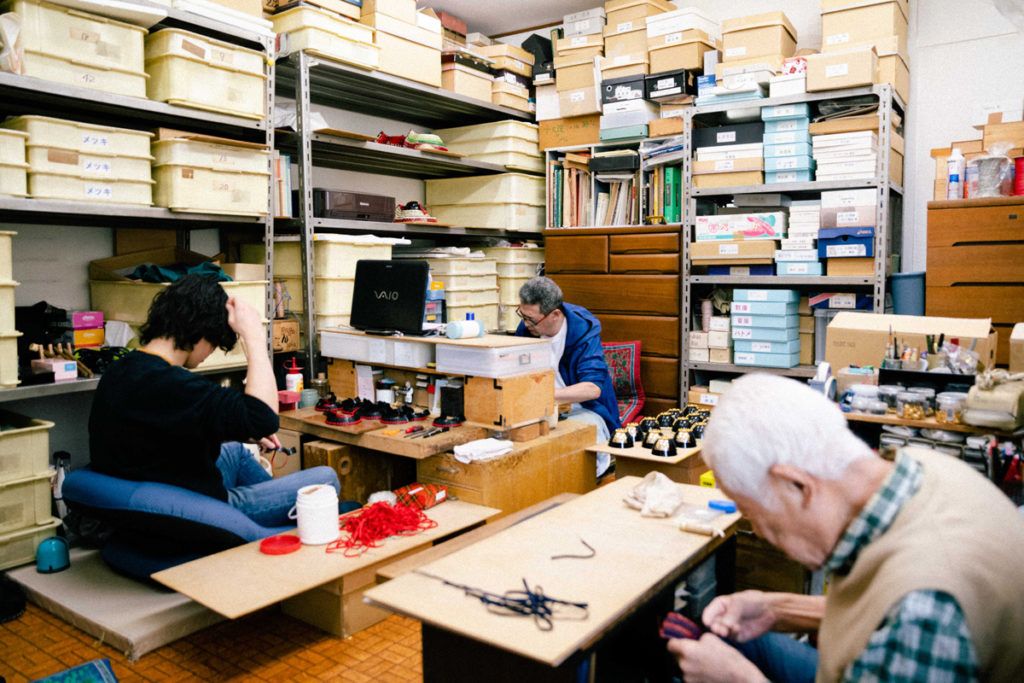In Tokyo’s Bunkyo Ward, there is a family of artisans who have been making armor for three generations: grandfather, father, and son. Armor was made by warriors during wartime to protect themselves from attack, and as a symbol of their authority and as a work of art to be worn. In modern times, “Boys’ May Festival dolls” are widely celebrated as a gift to mark the growth of a child. PAPERSKY caught up with 25-year-old Takumi Kato, who is striving to take Japan’s ancient culture and the world’s cultural heritage into the future.

How did you become interested in this line of work in the first place?
“In my case, my mentors are grandfather and father. Rather than being apprenticed to someone who is not a blood relation, I grew up surrounded by armor made by my grandfather and father from the time I was born, and we have lived together as a family. So from a young age, I had a passion for craftsmanship and the joy of making things. By the time I took the high school entrance exam, I had already made up my mind that I wanted to become an armorer, so I chose to go to the same crafts high school as my father.”

That said, as the eldest son of father, Yoshitsugu, he was presumably expected to take over the family business. I also wonder if he had any resistance to this.
“It wasn’t exactly indoctrination, but there were more than a few occasions as a youngster when I realized that I really wanted to take over the business. I was always given the freedom to choose another career, but I was also thrilled when people around me called me “the third generation,” and so felt inexorably drawn to this industry since I was a child.”

Upon graduating high school, Takumi became the third generation of Tomomi Kato’s apprenticeship, and this year marks his eighth year. How does the world of craftsmanship compare in Takumi’s eyes before and after he joined?
“It was not until I became an apprentice and engaged with society that I realized that armor was not as well-known to the public as I had thought. That is why, as the person carrying on the legacy of Tomomi, I am constantly thinking about what comes next for us. After all, the festivals are paid for and decorated by one’s own parents, so if the parents’ generation has not bought and decorated the festivals, their children are not even aware of the culture. Coupled with the declining birthrate and smaller rooms, the demand for dolls is decreasing every year. So, we are exploring ways to go beyond the framework of “May dolls” to the broader areas of craftsmanship and interior design.”

As the third generation and one of the new wave upon whom the industry will depend, he continues to train under his grandfather and father while thinking up ways to take the business forward. With his grandfather sitting always to his right and his father across from him, the entire process is done by hand and involves a meticulous division of labor. We asked Takumi about these two men, who are both family and mentors to him.
“We are family and most of the time just like any other household. I call them “Paps” and “Dad”. But when it comes to work, there’s stuff to learn all the time, and they are amazing mentors. At the same time, I feel that it is a big wall that must be overcome; my grandfather traveled across the country on his own to cultivate his skills and knowledge. Even though he is over 80 years old, he is still active and qualified as a traditional craftsman. His perpetual spirit of inquiry is inspirational, and I feel a strong sense of responsibility and resolve to pass this culture down. My grandfather passed the techniques down to my father, who applied them in his own way, and I am keen to develop his ability to apply himself and his willingness to learn. Just as with my grandfather still being active today, the learning journey never ends with the world of armor. It has been eight years since I became his apprentice, and I think I am finally starting to get to the starting line – I’m on my toes everyday just trying to keep up.”
At Takumi’s suggestion, they are now planning to open an online store and website. Armor has many core fans from overseas, and they plan to sell their products and hold events outside of Japan in the coming years.
“First and foremost, I want to properly absorb the techniques and continue making good products as the third generation of Tomomi. Because we make our armor by hand, it has a feel that cannot be achieved by machines. So, we would like to develop our armor into interior decorations and accessories, such as straps and brooches, using the same materials and changing the configuration of the armor. While overseas expansion is on our radar, I’ll be throwing myself into various ideas that the two mentors had not been able to do before”












